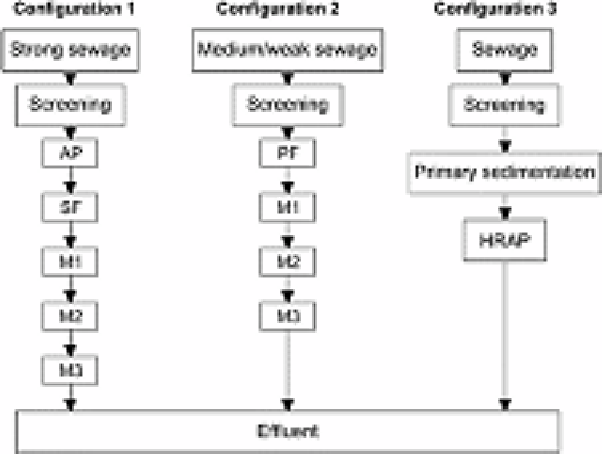Environmental Engineering Reference
In-Depth Information
Figure 10.2. Alternative configurations
of pond systems.
For medium to large size treatment plants, it is advisable to configure the number of
ponds in the different stages in the form of two or more parallel units in order to provide
for desludging without the need of bypassing the whole stage. This is most valid for the
AP or PF stage, where most of the sludge is accumulated. Based on practical experience,
it is recommended to configure several M in a series for a higher rate of pathogen
removal (Horan 1990).
Configuration 2 is applicable for weak sewage and could be applied as a diffuse
pollution abatement measure in cases of polluted storm water runoff. In such cases,
provision for regular desludging is very important. Configuration 3 has the primary
objective for algae production and use as a protein source, parallel to sewage treatment.
Another widely applied configuration consists in the combination of conventional
treatment systems and maturation ponds. In such cases, the ponds have a polishing
function, and if properly operated, could improve significantly the effluent quality of a
conventional treatment system with respect to organic pollution and pathogens removal.
Such configuration was discussed in Chapter 8 (Fig. 8.5). In cases where wastewater
would be used for irrigation purposes, configurations 1 or 2 would be suitable, depending
on the strength of the incoming sewage.
2.2
Design approaches
In general, ponds are considered as completely mixed biological reactors and their design
is based on empirical equations or recommended design parameters, obtained on the basis
of investigation of existing facilities under continuous operation. WSPS are biological

